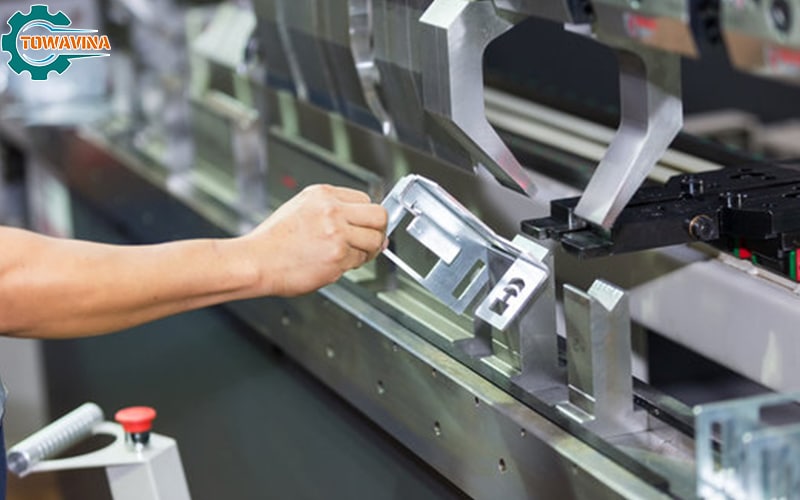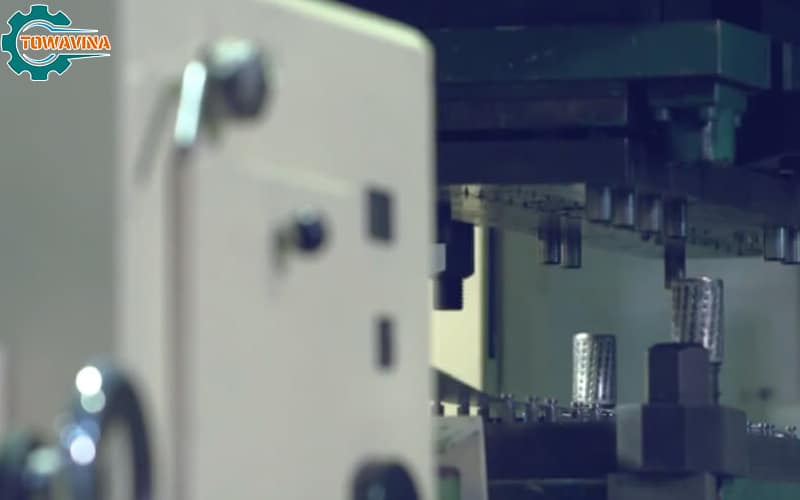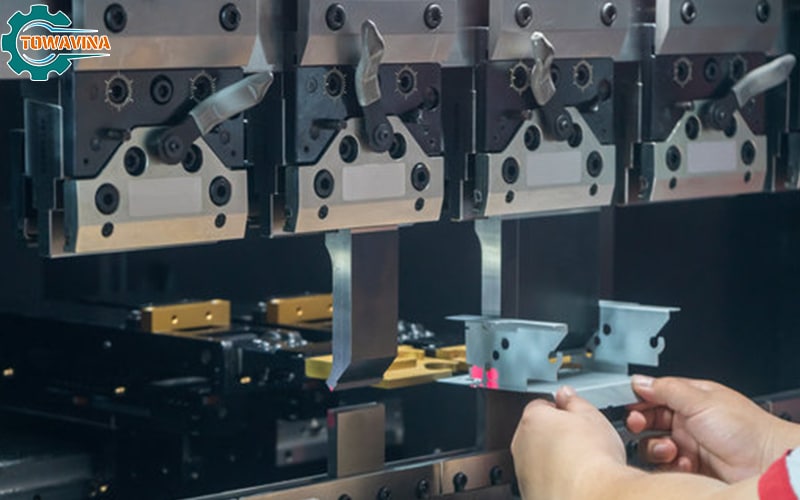Metal stamping involves a lot more than what is commonly acknowledged by most people. Creating complex parts often involves a series of multiple steps. Even seemingly simple parts typically require more than one stamping step to be considered fully completed.
I. What is metal stamping?
Metal stamping is a manufacturing technique employed to transform flat metal sheets into particular shapes. It involves various metal forming methods such as blanking, punching, bending, and piercing. This process is intricate and requires precision.
Stamping basics
Stamping, also known as pressing, requires placing a flat sheet of metal, whether in coil or blank form, into a stamping press. Within the press, a tool and die surface are used to shape the metal into the desired form. Punching, blanking, bending, coining, embossing, and flanging are all stamping techniques utilized to manipulate the metal into various shapes.
Metal stamping offers a rapid and economical answer for meeting the high-volume manufacturing demand. When seeking metal parts to be stamped for a specific project, manufacturers typically prioritize three key attributes.

II. Common Metal Stamping Processes
Aside from steps like design and prototyping, which are essential before stamping, there are nine main processes involved in the actual stamping of metal parts.
-
Blanking
When necessary, the first step in the stamping process is blanking. Blanking involves cutting larger sheets or coils of metal into smaller, more manageable pieces. This process is typically carried out when a stamped metal piece will be drawn or formed.
-
Piercing
Piercing can be used to create slots, holes, or other cutouts in a part. It involves punching out the necessary shapes from the metal sheet, and can be done at the same time as blanking.
-
Drawing
Drawing refers to the process of stamping in metal stamping. A punch is used to force a section of metal through a die, shaping the primary form of the part. If the depth of the part is shallower than the primary opening, it is known as shallow drawing, while parts with a depth greater than the opening are considered deep drawn.

-
Bending
Bending is a straightforward process where the part-in-progress is placed on a specially designed die, and a ram is used to push against the metal, creating the necessary bend. Bending is typically carried out after drawing, as attempting to punch an already bent piece of metal can cause the entire part to deform.
-
Air bending
Air bending involves using a punch to bend the flat surface of a part into a V-shaped die, with a space between the punch and die that is larger than the metal thickness. This results in a bend that relaxes slightly when the part is released, and it requires less power and pressure compared to other bending methods.
-
Bottoming and coining
Bottoming and coining processes are similar to air bending but involve using significantly higher pressure, up to 30 times more, and forcing the material fully into a tight-fitting die. This results in a more permanent bend.
-
Forming
Forming is a bending process similar to bending, bottoming, and coining. It is used to create parts with multiple bends, such as U-bends, in a single step.

-
Pinch Trimming
Pinch trimming involves cutting a piece from a metal sheet and separating it from the scrap metal. This unconventional process pinches the metal against a flat vertical surface. It is commonly used to cut deep drawn round cups from the sheet, but not exclusively.
-
Lancing
Lancing is a unique metal cutting process used to create vents or tabs. It involves cutting a section of a part along three edges and simultaneously bending it. This results in the desired opening or hook-like feature without the need for scrap collection or secondary machining.
Learn More
The stamping process involves a variety of different processes, and not all of them are necessary or ideal for every part. By fully understanding these processes, you can design parts more effectively to reduce waste, save costs, and improve production efficiency without compromising quality.
Contact us today and get a quote for CNC machining services.
TOWAVINA CO.,LTD
Binh Chuan 44, Binh Chuan, Thuan An, Binh Duong
Hottline: 0979.034.634 – 0931.155.155
Mail: sales@towavina.com
Website: towavina.com



